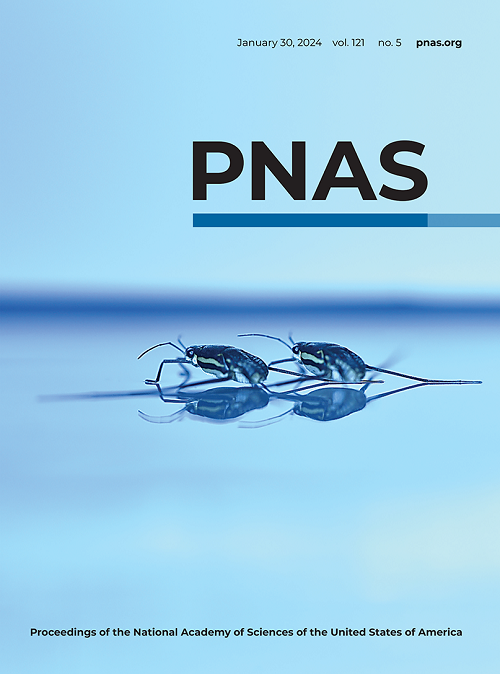An atlas of protein phosphorylation dynamics during interferon signaling
IF 9.1
1区 综合性期刊
Q1 MULTIDISCIPLINARY SCIENCES
Proceedings of the National Academy of Sciences of the United States of America
Pub Date : 2025-03-26
DOI:10.1073/pnas.2412990122
引用次数: 0
Abstract
Interferons (IFNs, types I-III) have pleiotropic functions in promoting antiviral and antitumor responses, as well as in modulating inflammation. Dissecting the signaling mechanisms elicited by different IFNs is therefore critical to understand their phenotypes. Here, we use mass spectrometry to investigate the early temporal dynamics of cellular protein phosphorylation in a human lung epithelial cell-line as it responds to stimulation with IFNα2, IFNβ, IFNω, IFNγ, or IFNλ1, representing all IFN types. We report an atlas of over 700 common or unique phosphorylation events reprogrammed by these different IFNs, revealing both previously known and uncharacterized modifications. While the proteins differentially phosphorylated following IFN stimulation have diverse roles, there is an enrichment of factors involved in chromatin remodeling, transcription, and RNA splicing. Functional screening and mechanistic studies identify that several proteins modified in response to IFNs contribute to host antiviral responses, either directly or by supporting IFN-stimulated gene or protein production. Among these, phosphorylation of PLEKHG3 at serine-1081 creates a phospho-regulated binding motif for the docking of 14-3-3 proteins, and together these factors contribute to coordinating efficient IFN-stimulated gene expression independent of early Janus kinase/signal transducer and activator of transcription signaling. Our findings map the global phosphorylation landscapes regulated by IFN types I, II, and III, and provide a key resource to explore their functional consequences.干扰素信号传导过程中蛋白质磷酸化动力学图谱
干扰素(ifn, I-III型)在促进抗病毒和抗肿瘤反应以及调节炎症方面具有多种功能。因此,剖析由不同ifn引发的信号机制对于理解其表型至关重要。在这里,我们使用质谱法研究了人类肺上皮细胞系中细胞蛋白磷酸化的早期时间动态,因为它对IFNα2、IFNβ、IFNω、IFNγ或IFNλ1(代表所有IFN类型)的刺激做出反应。我们报告了由这些不同ifn重编程的700多个常见或独特磷酸化事件的图谱,揭示了以前已知和未表征的修饰。虽然IFN刺激后不同磷酸化的蛋白质有不同的作用,但染色质重塑、转录和RNA剪接中涉及的因子丰富。功能筛选和机制研究发现,几种针对ifn修饰的蛋白质直接或通过支持ifn刺激的基因或蛋白质产生,有助于宿主的抗病毒反应。其中,PLEKHG3丝氨酸-1081位点的磷酸化为14-3-3蛋白的对接创造了磷酸化调控的结合基序,这些因素共同有助于协调ifn刺激的高效基因表达,而不依赖于早期Janus激酶/信号换能器和转录信号激活因子。我们的研究结果绘制了IFN I、II和III型调节的全球磷酸化格局,并为探索其功能后果提供了关键资源。
本文章由计算机程序翻译,如有差异,请以英文原文为准。
求助全文
约1分钟内获得全文
求助全文
来源期刊
CiteScore
19.00
自引率
0.90%
发文量
3575
审稿时长
2.5 months
期刊介绍:
The Proceedings of the National Academy of Sciences (PNAS), a peer-reviewed journal of the National Academy of Sciences (NAS), serves as an authoritative source for high-impact, original research across the biological, physical, and social sciences. With a global scope, the journal welcomes submissions from researchers worldwide, making it an inclusive platform for advancing scientific knowledge.

 求助内容:
求助内容: 应助结果提醒方式:
应助结果提醒方式:


